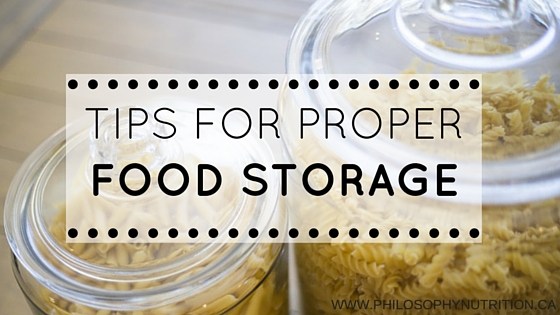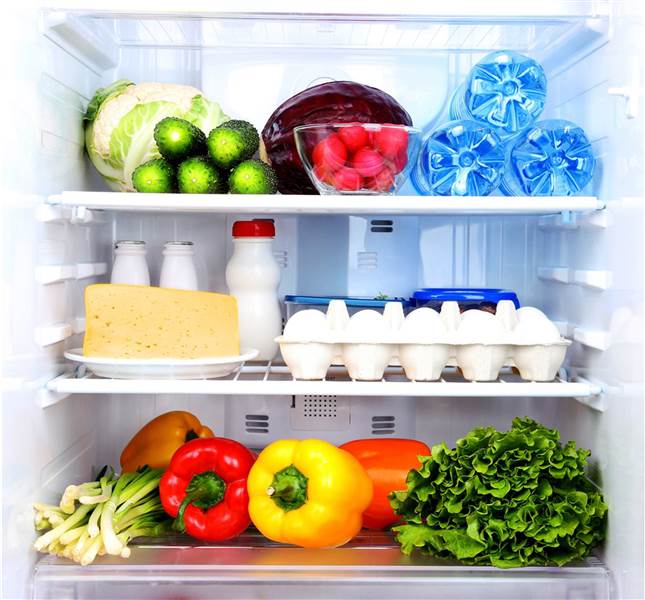by Nora White
How to Store Food Properly and Prevent the Negative Impacts of Improper Storage on Your Health
Proper food storage is very important to your health as well as your family’s health. To ensure the overall safety of your family it is important to create proper storage solutions for the various kinds of foods consumed in your household. This is because proper food storage helps in maintaining the nutritional value of the food while ensuring that it is safe for consumption. It also allows for consumption of food a day or two later thereby avoiding wastage due to spoilage.

If the food is not stored properly, bacteria and fungi that are responsible for food poisoning can use that as leverage to multiple to dangerous levels. It can also lead to the spread of various other diseases. Factors such as storage location of raw and cooked food also affects the authenticity of the food. Take a look at some of the dos and don’ts when it comes to proper food storage with examples of specific kinds of foods as well as the required storage conditions for it:
Storing food in the fridge
Certain perishable foods need to be stored in a lower temperature to avoid bacteria culture. These include foods with use-by dates, cooked food and ready-to-eat foods such as desserts, cooked meats and pasta and pizza sauces.
In order to ensure proper preservation of these foods, you must ensure that the temperature of your fridge is between 0o Celsius to 5o Celsius. Pro Tip – You can use a fridge thermometer to check the exact temperature of your fridge.
Tips to keep in mind while storing food in your fridge
- Ensure that the fridge door isn’t left open for long periods to avoid entrance of airborne bacteria.
- Wait for the food to cool down before putting it into the fridge. In case of leftovers, try to cool it as quickly as possible (ideally within one-two hours and then store them in the fridge.
- If your fridge is required to store more food than its usual capacity, decrease the temperature to ensure each food item receives adequate cooling.
- Make it a practice to store raw meat, poultry and fish in well sealed containers while ensuring it is kept away from the cooked foods. The best way to ensure this is to allot the lowest shelf to the uncooked meats and reserving the upper shelves for cooked meats and food products.

Storing food in the freezer
The freezer is a great way to store foods for longer periods without having to worry about wastage of food. While freezers allow you to store food for longer periods, it is still necessary to follow the storage guidelines that come along with the food product. You must do this in order to preserve the food in a way that the quality of the food doesn’t degrade due to prolonged freezing.
Tips to keep in mind while storing food in your freezer
- Freeze all foods before the use-by date for best results.
- In case of foods that need to be thawed before use, ensure you use it immediately after being thawed without allowing it to get too warm as this might promote the growth of harmful organisms. If you don’t intend on using the food product immediately after thawing, keep it in the fridge for even thawing and to avoid degradation due to bacteria culture.
- Make sure you use the food within 24 hours of thawing it for best results.
- If you are using a food product that was previously frozen, make sure you cook it all the way through, preferable till it is steaming hot.
Now that you know the basic rules of food storage, here are some guidelines for the most commonly consumed foods:
- Storing eggs
Eggs require a constant temperature to avoid spoilage and thus should be stored in the fridge. However, eggs can also be frozen, here’s how:
- Crack the eggs and separate the yolks from the whites and store them in different containers.
- Crack the eggs into a container and beat it before freezing to enable quick on-the-go meal prep.
- Storing meat and poultry
Storing both cooked and uncooked meat can be extremely tricky as they have a higher tendency to attract bacteria that are known to cause various gastro-intestinal diseases such as food poisoning. Here’s how you can store meat to ensure its authenticity even it is required to be reused:
- While storing meat in the freezer, make sure it is properly wrapped to avoid freezer burn as it can make it tough and inedible.
- If you are thawing meat products in the fridge, keep it at the lower most shelves in a vacuum sealed container to avoid leakage of juices from the raw meat as it can affect the integrity of the cooked foods in your fridge.
- Never re-freeze raw meat that has been defrosted once. However, you can cook the meat and then refreeze it, as far as you have allowed it to completely cool down.
- Storing fruits and vegetables
Storing produce can be tricky as many foods and vegetables can be incompatible when stored together. This happens because some fruits emit ethylene gas which can cause vegetables to rot prematurely.
- Most fridges have vegetable crispers that are designed to keep the produce firm and fresher for longer. This is the best place to keep gas sensitive vegetables as this area is sealed off from the rest of the fridge.
- Avoid storing fruits and vegetables in their own airtight bags or containers as that might speed up the decay instead.
- Storing leftovers and perishable food
Last, but not the least are the lunchtime heroes – the leftovers. Here are some tips to help you maintain the quality of the leftovers for reusing:
- Cool the leftovers as quickly as possible
- Divide the leftovers in preferred portions before refrigerating or freezing
And there you have it, all you need to know about handling both cooked and uncooked foods properly to ensure the food is fit for consumption, thereby preventing wastage of food. By following the guidelines for food storage mentioned above, you will also be able to ensure that you and your family are healthy and safe at all times!
Author Bio:
 Nora White is the digital marketing manager for SANS. She has been an advocate of a healthy lifestyle for over 2 decades and loves to keep herself updated with the latest in clean eating and green living. When not at work, you can find her at a hot yoga class or writing to educate and help her readers come one step closer to a healthier lifestyle. In her free time, she loves to travel with her husband and two boys, and hike with friends.
Nora White is the digital marketing manager for SANS. She has been an advocate of a healthy lifestyle for over 2 decades and loves to keep herself updated with the latest in clean eating and green living. When not at work, you can find her at a hot yoga class or writing to educate and help her readers come one step closer to a healthier lifestyle. In her free time, she loves to travel with her husband and two boys, and hike with friends.